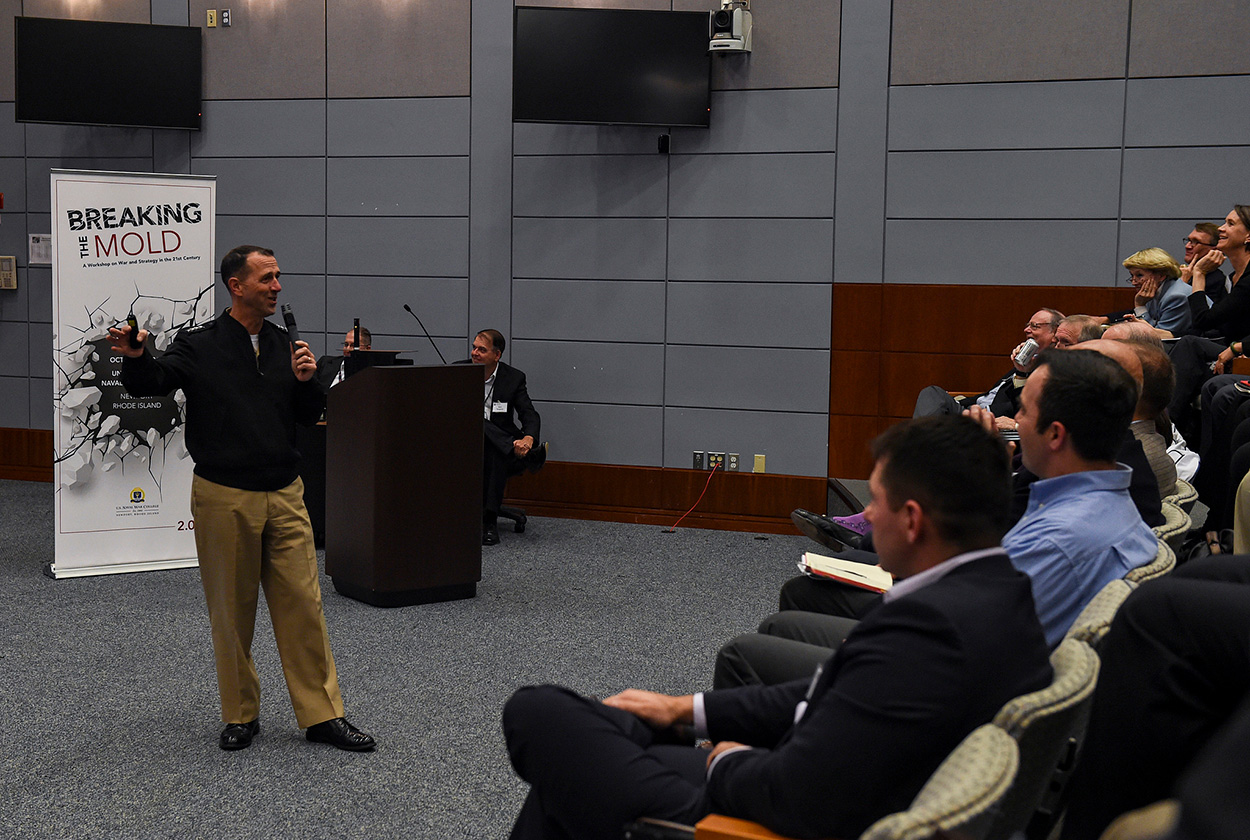Second Breaking the Mold workshop incorporates young voices

More than 140 military thinkers attended the second Breaking the Mold workshop at U.S. Naval War College this week with the aim of challenging old models that make the U.S. military predictable in battle.
Under Secretary of the Navy Thomas Modly, who initiated the workshop series, Chief of Naval Operations Adm. John Richardson and former Deputy Secretary of Defense Robert O. Work attended the two-day event Oct. 24-25.
With participants from the military, academia and the defense industry, the group more than doubled in size from the first Breaking the Mold session in March.
“The belief is that if we continue to do things the way we’ve always done them, we may not be successful in the changing environment,” said John Jackson, Naval War College professor of unmanned systems and one of the event organizers.
“We have to adapt to changes in technology, geopolitical situations, what our potential adversaries are doing.”
Organizers made a conscious effort to include young voices in this workshop. A third of those in attendance were at the O-5 rank or below. Three-fourths were new to the effort since the first time.
Participants were encouraged in invitations from Naval War College President Rear Adm. Jeffrey Harley to generate “novel and radical” ideas.
“We should boldly design a Navy 5.0 by extrapolating trends and imagining the Naval services that we want after next,” Harley told the audience Wednesday.
Nine working groups examined “what if” scenarios ranging from the deployment of genetic weapons by rival nations to how the Navy might maintain the U.S. fleet in the event of an American economic collapse.
The Naval War College will publish a public report on the conclusions from the workshop in about three months, as it did after the March session.
The first Breaking the Mold report is available on the Naval War College website, www.usnwc.edu.
